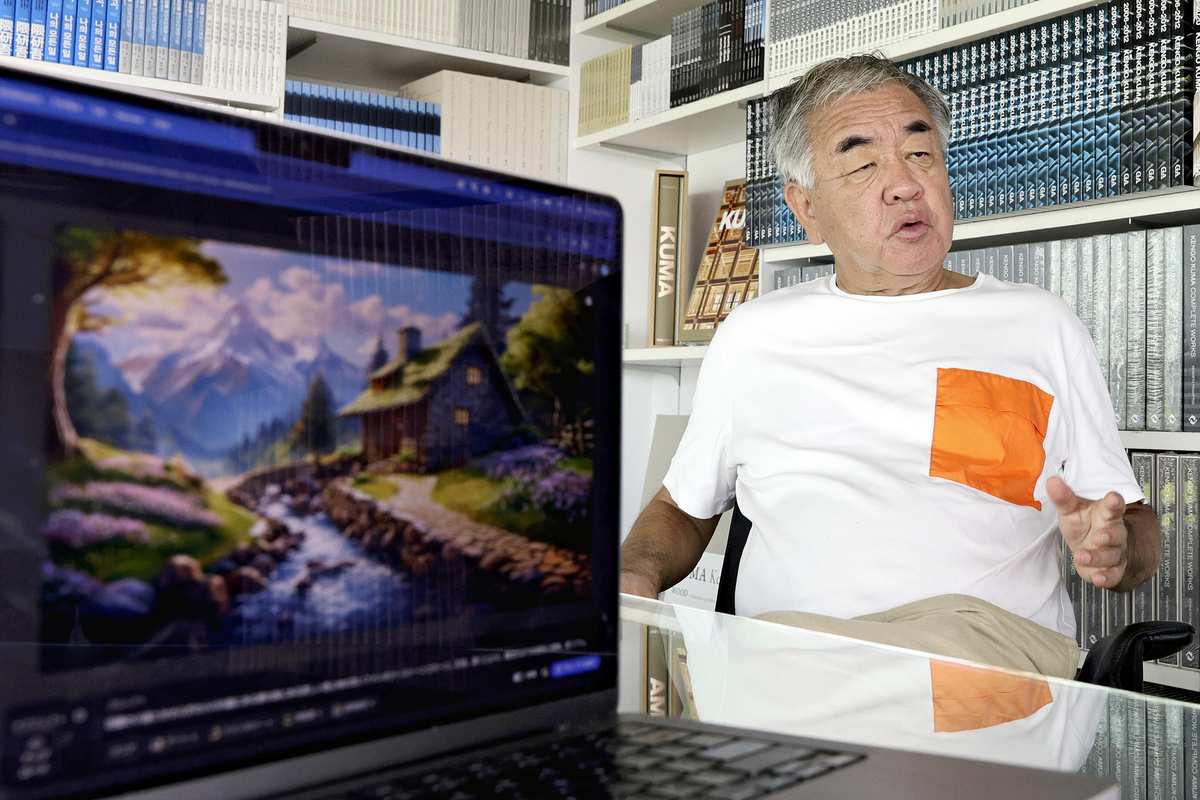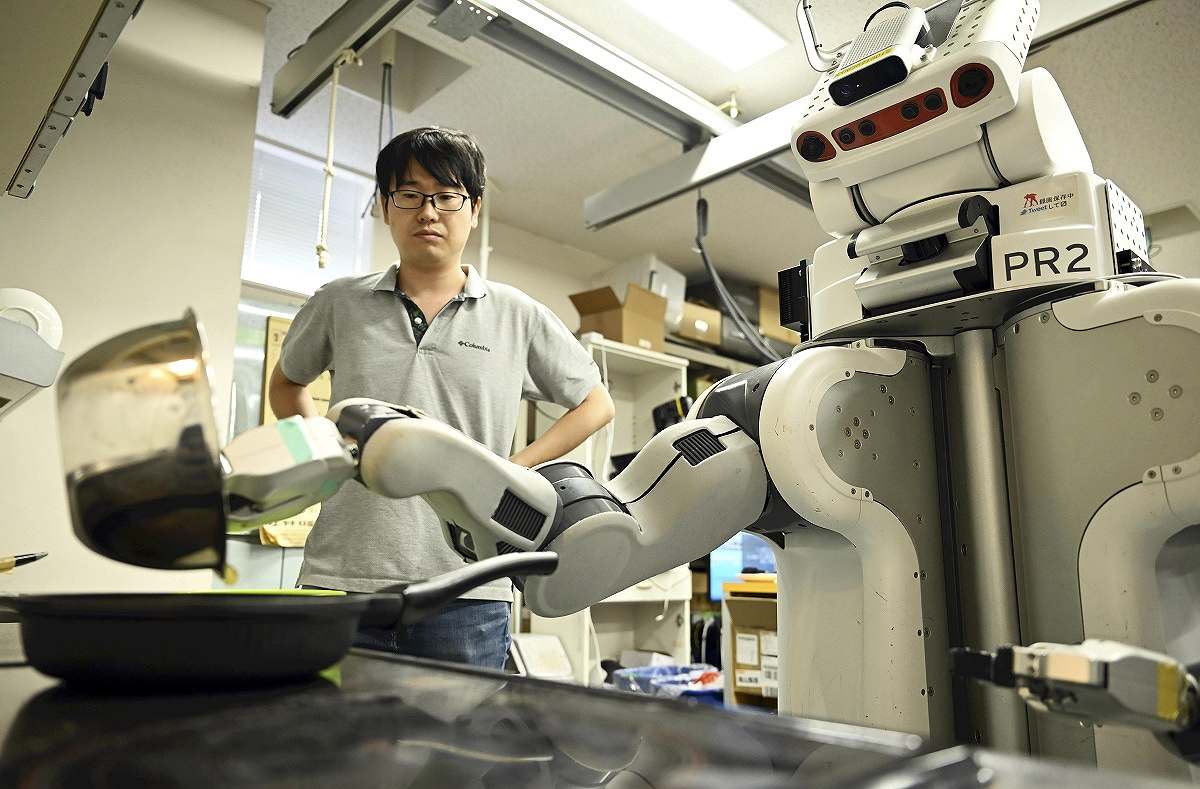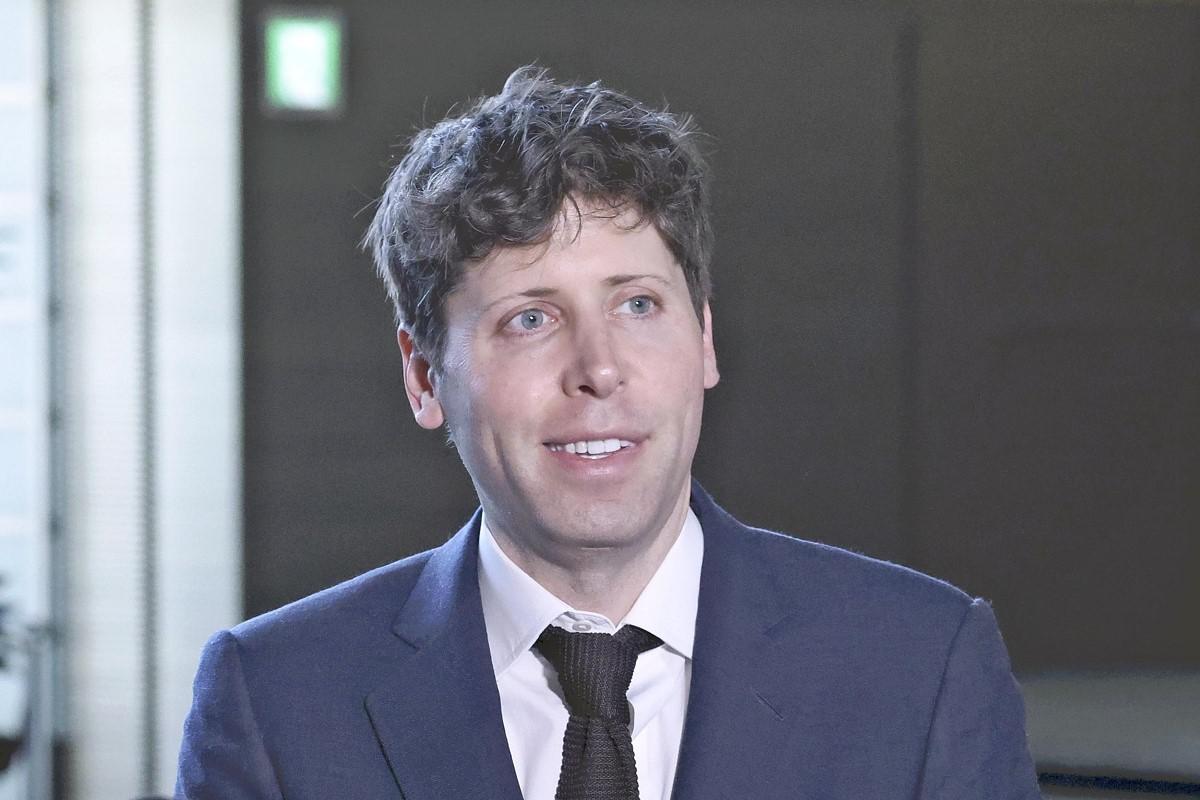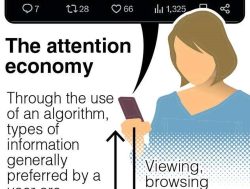Examining Generative AI: Cutting Through the Chaos / World-Renowned Japanese Architect’s Office Utilizes AI in Design Process; Kengo Kuma says Humans Must Always Make Final Decisions, Not Machines

Architect Kengo Kuma talks about generative AI in Minato Ward, Tokyo, in September.
The Yomiuri Shimbun
6:00 JST, November 26, 2024
This is the fifth and the final installment in a series examining how society should deal with generative artificial intelligence (AI).
***
At the office of world-renowned architect Kengo Kuma, a staff member drew a rough sketch on a computer screen and typed such keywords as “contemporary architecture” and “wooden art museum in city center” on an image generative AI system in early September. A 3D rendering, referred to as a perspective drawing, of a building appeared instantly.
Before, the office would first make a 2D drawing and then create a perspective drawing while considering quake resistance and other factors. Work that used to take a week can now be done in 10 minutes. Kuma, 70, says AI has “overwhelming ability” in terms of improving work efficiency.
Kuma’s office has been testing out AI for its work since around the beginning of last year. AI has helped the 400-member staff manage 400 projects in Japan and overseas. The time saved has been spent meeting with clients or coming up with new ideas.
Kuma uses AI not only to streamline his work but also create new designs by getting ideas from images generated by AI, with the aim of “surpassing the current Kengo Kuma.” After seeing the AI-generated designs, which were created after AI learned Kengo Kuma’s architecture, Kuma said he felt inspired to “become the next version of [himself].”
However, through using AI, Kuma came to the realization that there are many jobs that can only be done by humans.
In architectural design, an architect needs to understand their client’s needs and create a space that includes features that are easy for people to use. For large urban facilities, the architect also needs to consider the feelings of those who live nearby, as well as how society will perceive it.
As design requires the subtleties of humans, Kuma said: “I make decisions by reading the mood of the times while watching social trends. You can’t get AI to calculate that.”
Using AI has made Kuma very aware of the responsibilities that can never be left to machines, making him realize that humans should always make the final decisions in what kind of building should be made based on what design.
60% see misuse of AI as ‘threat’
As AI becomes more widely used, there is a movement to have AI handle some of the work. A survey conducted by independent administrative agency Information-technology Promotion Agency, Japan (IPA) found that 16% of the approximately 4,900 workers surveyed have either used or were in a position to use AI in their workplace as of March. AI was found to be used for customer inquiries or translations, and IPA believes that the use of AI will further increase.
Of the 1,000 respondents who have either used or plan to use AI, about 60% said that the spread of false information and information leaks by AI was a “threat.”
Generative AI also has the risk of copyright infringement. The Copyright Law currently allows copyrighted works to be used for machine learning without authorization, except in cases in which it would unfairly harm the author’s interest. Copyright collectives are calling for rights to be protected through such means as the rejection of machine learning.
Kuma’s office carefully considers the risks of copyright infringement and other issues and educates its staff about information security.
While expectations are high that AI will make work more efficient, there are also risks associated with the technology. We have entered an era in which we are being tested regarding how to use AI.
Related Articles “Examining Generative AI: Cutting Through the Chaos”
Popular Articles
Popular articles in the past 24 hours
-

Japan Prime Minister Meets With Anime, Music Experts to Discuss D...
-

70% of School Institutions in Japan Fail to Check New Database on...
-

In the Italian Alps in a Region That Will Host the 2026 Winter Ol...
-

Sumo Scene / 2 New Yokozuna Make 2025 a Year of Great Upheaval, 2...
-

U.S. Hoping to Use Heavy Weapons in Training at 5 GSDF Sites
-

New Keizai Doyukai Chairperson: Heavy Responsibility to Rebuild O...
-

Shrine Maidens Assemble Treasure Ships Ahead of New Year's Pilgri...
-

Santa Claus appears at Chubu Centrair International Airport
Popular articles in the past week
-

U.S. Senate Resolution Backs Japan, Condemns China's Pressure
-

Japan Set to Participate in EU's R&D Framework, Aims to Boost Coo...
-

As Chinese Tourists Shun Japan, Hotels and Stores Suffer
-

Bus Bound for Hokkaido's New Chitose Airport Catches Fire Wednesd...
-

AI Personalizes Foreign Language Lessons in Pilot Projects, Inspi...
-

Rakuten Develops New Large Language Model; ‘Rakuten AI 3.0’ Is On...
-

Popularity of Piggy Banks Across Time and Place Seen at Bank's Mu...
-

Nagano Pref. Village to Introduce Fines for Some Disruptive Behav...
Popular articles in the past month
-

Tokyo Economic Security Forum to Hold Inaugural Meeting Amid Tens...
-

Keidanren Chairman Yoshinobu Tsutsui Visits Kashiwazaki-Kariwa Nu...
-

Imports of Rare Earths from China Facing Delays, May Be Caused by...
-

University of Tokyo Professor Discusses Japanese Economic Securit...
-

Japan Pulls out of Vietnam Nuclear Project, Complicating Hanoi's ...
-

Govt Aims to Expand NISA Program Lineup, Abolish Age Restriction
-

Blanket Eel Trade Restrictions Rejected
-

Key Japan Labor Group to Seek Pay Scale Hike
"Society" POPULAR ARTICLE
-

M4.9 Earthquake Hits Tokyo, Neighboring Prefectures
-

Israeli Tourists Refused Accommodation at Hotel in Japan’s Nagano Pref., Prompting Protest by Israeli Embassy and Probe by Prefecture
-

M7.5 Earthquake Hits Northern Japan; Tsunami Waves Observed in Hokkaido, Aomori and Iwate Prefectures
-

Tsukiji Market Urges Tourists to Avoid Visiting in Year-End
-

High School in Kyoto Says Students Shoplifted during Recent School Trip to Bali, Indonesia
JN ACCESS RANKING
-

Tokyo Economic Security Forum to Hold Inaugural Meeting Amid Tense Global Environment
-

Keidanren Chairman Yoshinobu Tsutsui Visits Kashiwazaki-Kariwa Nuclear Power Plant; Inspects New Emergency Safety System
-

Imports of Rare Earths from China Facing Delays, May Be Caused by Deterioration of Japan-China Relations
-

University of Tokyo Professor Discusses Japanese Economic Security in Interview Ahead of Forum
-

Japan Pulls out of Vietnam Nuclear Project, Complicating Hanoi’s Power Plans










